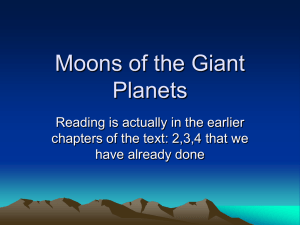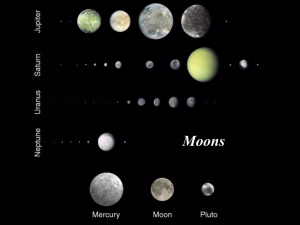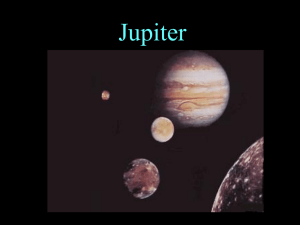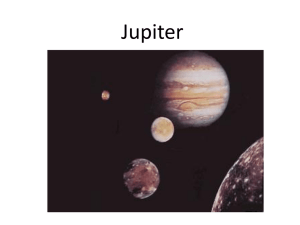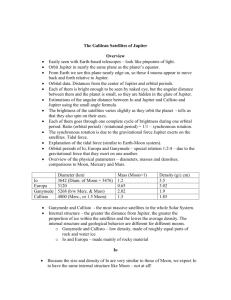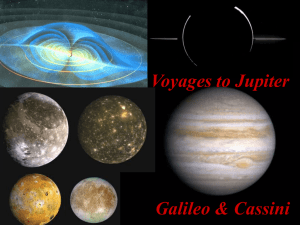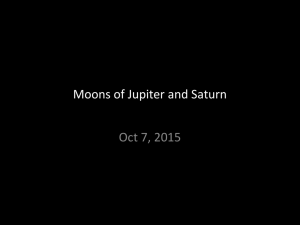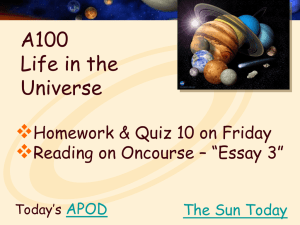Distinguished Lecturer in Astronomy Melissa A. McGrath Jupiter and its Galilean Satellites
advertisement
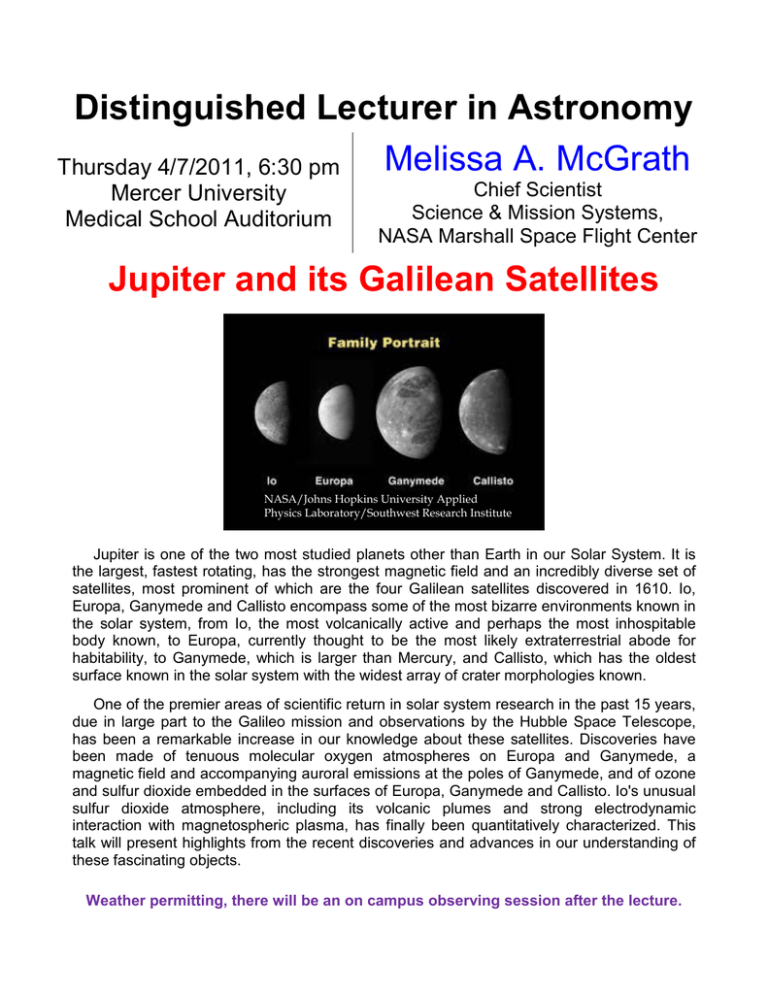
Distinguished Lecturer in Astronomy Melissa A. McGrath Thursday 4/7/2011, 6:30 pm Mercer University Medical School Auditorium Chief Scientist Science & Mission Systems, NASA Marshall Space Flight Center Jupiter and its Galilean Satellites NASA/Johns Hopkins University Applied Physics Laboratory/Southwest Research Institute Jupiter is one of the two most studied planets other than Earth in our Solar System. It is the largest, fastest rotating, has the strongest magnetic field and an incredibly diverse set of satellites, most prominent of which are the four Galilean satellites discovered in 1610. Io, Europa, Ganymede and Callisto encompass some of the most bizarre environments known in the solar system, from Io, the most volcanically active and perhaps the most inhospitable body known, to Europa, currently thought to be the most likely extraterrestrial abode for habitability, to Ganymede, which is larger than Mercury, and Callisto, which has the oldest surface known in the solar system with the widest array of crater morphologies known. One of the premier areas of scientific return in solar system research in the past 15 years, due in large part to the Galileo mission and observations by the Hubble Space Telescope, has been a remarkable increase in our knowledge about these satellites. Discoveries have been made of tenuous molecular oxygen atmospheres on Europa and Ganymede, a magnetic field and accompanying auroral emissions at the poles of Ganymede, and of ozone and sulfur dioxide embedded in the surfaces of Europa, Ganymede and Callisto. Io's unusual sulfur dioxide atmosphere, including its volcanic plumes and strong electrodynamic interaction with magnetospheric plasma, has finally been quantitatively characterized. This talk will present highlights from the recent discoveries and advances in our understanding of these fascinating objects. Weather permitting, there will be an on campus observing session after the lecture.
